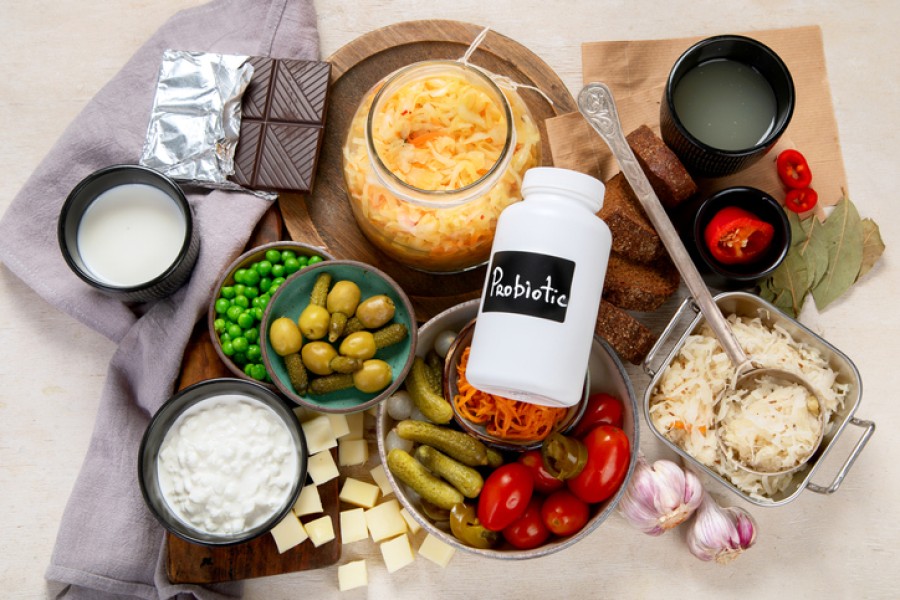Our
gut health is much more important than we think. It's not just about good digestion and absorption of food; it also affects our
energy, our body's defences, and even our mood. More and more often, we hear the terms "
probiotics" and "
prebiotics," two concepts directly related to the health of our digestive system.
What are probiotics?
Probiotics are food supplements containing live organisms (bacteria) and yeasts. These microorganisms are also found naturally in our gut and benefit our body, especially the digestive system. The beneficial probiotics we take through supplements or foods are similar to those found in our gut and, in essence, enhance those in our gut.1
What do probiotics help with?
- Fighting or preventing infections in the stomach or intestines
- Diarrhoea or constipation
- Prevent or treat allergies, including a skin condition called eczema.
- They may help prevent or treat vaginal infections in women.2
What are prebiotics?
- Prebiotics are types of indigestible plant fibre that are "food" for beneficial bacteria in the gut. They contribute to the growth and activity of probiotics, thus enhancing intestinal health.
- What do prebiotics help with? They can be found in various foods, including bananas, onions, garlic, leeks, asparagus, and artichokes. These foods are rich in prebiotics and can help improve intestinal motility, support the microflora, and maintain gut health.
- Improving intestinal motility: Prebiotics increase stool volume and promote regular bowel movements.
- By supporting the microflora, prebiotics boost the balance of beneficial bacteria, which in turn can reduce inflammation and uncomfortable symptoms such as bloating. This reassures us of the potential health benefits of prebiotics.
- Short-chain fatty acids (SCFAs), produced by the fermentation of prebiotics, play a vital role in maintaining gut health. This enlightens us about our body's intricate workings and the role of prebiotics in it.
Sources of prebiotics:
- Fruits (e.g., bananas, apples)
- Vegetables (e.g., green leafy vegetables, beets, leeks, asparagus, artichokes, garlic, onions)
- Whole grains
- Roots and others (e.g., sweet potato, ginger)3
What is the main difference?
Prebiotics are a type of fiber that the human body cannot digest. Prebiotics are present in fibre-rich foods such as fruits, vegetables, and whole grains and are the food for probiotics. Food supplements' most commonly found prebiotics are fructooligosaccharides, oligosaccharides, inulin, and lactulose.
What to look out for when buying probiotics:
The
type of microorganism (strain): not all probiotics are the same. The probiotic organisms are not all the same; there are
different species, and each strain has a different action. The
quantity (CFUs): Probiotics are measured in CFUs (colony-forming units). A good formulation usually has billions of CFUs. The exact amount depends on why you are taking them.
The
expiration date and the storage conditions: Some probiotics need refrigeration to keep them active.
The
composition: Some formulations include prebiotics, which are called symbiotics and enhance the action of probiotics. They are often a good choice.
The
use and duration: Probiotics' action is temporary, meaning they work as long as we take them.

Conclusion
Balance in our gut is a key factor in our overall health. Probiotics and prebiotics are two valuable allies in this. Whether through diet or with the help of a proper supplement, they can make a difference in our daily lives.
Similarly, probiotics are symbiotic microorganisms, including bacteria and yeast, that support the health and function of the body. They are scattered throughout our body in the mucous membranes, skin, mouth, vagina but the gut is the most diverse and numerous colony. They are mainly found in fermented foods such as yoghurt, pickles, cheeses, or kefir.4
If we look at it:
Probiotics = the good bacteria.
Prebiotics = their food
They work complementarily and often combine in products called symbiotes, a potent combination for gut health.








